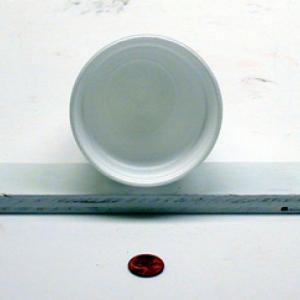College of Liberal Arts & Sciences
2C20.44 - Coin in a Cup
Place the penny about 5 cm to 8 cm from the edge of a table. Tilt the cup with the block, make the lower lip of the cup about 2 cm off of the table and about 8 cm behind the penny. Blow hard across the top of the penny and it should lift up and jump into the cup.
- Mateo Dutra, Alvaro Suarez, Martin Monteiro, Arturo Carlos Marti, "When the Quarter Jumps Into a Cup (And When It Does Not)", TPT, Vol. 60, #2, Feb. 2022, p. 87.
- Martin Gardner, "44. The Hopping Ping - Pong Ball", Smart Science Tricks, p. 69.
- Cy Tymoney, "Air Pressure Demonstration VI", Sneakiest Uses for Everyday Things, p. 26.
- Robert J. Brown, "Bernoulli with a Dime", 333 More Science Tricks and Experiments, p. 49.
- R. D. Edge, "Experiment 3.13: Levitating a Dime", String and Sticky Tape Experiments.
- Robert Ehrlich, "H.12. Blowing a Quarter Into a Cup", Turning the World Inside Out and 174 Other Simple Physics Demonstrations, p. 106 - 107.
- "Jumping Dime", Physics From the Junk Drawer, 3rd Edition, The Science House, North Carolina State University, p. 19.
- Tik L. Liem, "The Leaping Egg", Invitations to Science Inquiry - Supplement to 1st and 2nd Ed. p. 30.
Disclaimer: These demonstrations are provided only for illustrative use by persons affiliated with The University of Iowa and only under the direction of a trained instructor or physicist. The University of Iowa is not responsible for demonstrations performed by those using their own equipment or who choose to use this reference material for their own purpose. The demonstrations included here are within the public domain and can be found in materials contained in libraries, bookstores, and through electronic sources. Performing all or any portion of any of these demonstrations, with or without revisions not depicted here entails inherent risks. These risks include, without limitation, bodily injury (and possibly death), including risks to health that may be temporary or permanent and that may exacerbate a pre-existing medical condition; and property loss or damage. Anyone performing any part of these demonstrations, even with revisions, knowingly and voluntarily assumes all risks associated with them.
